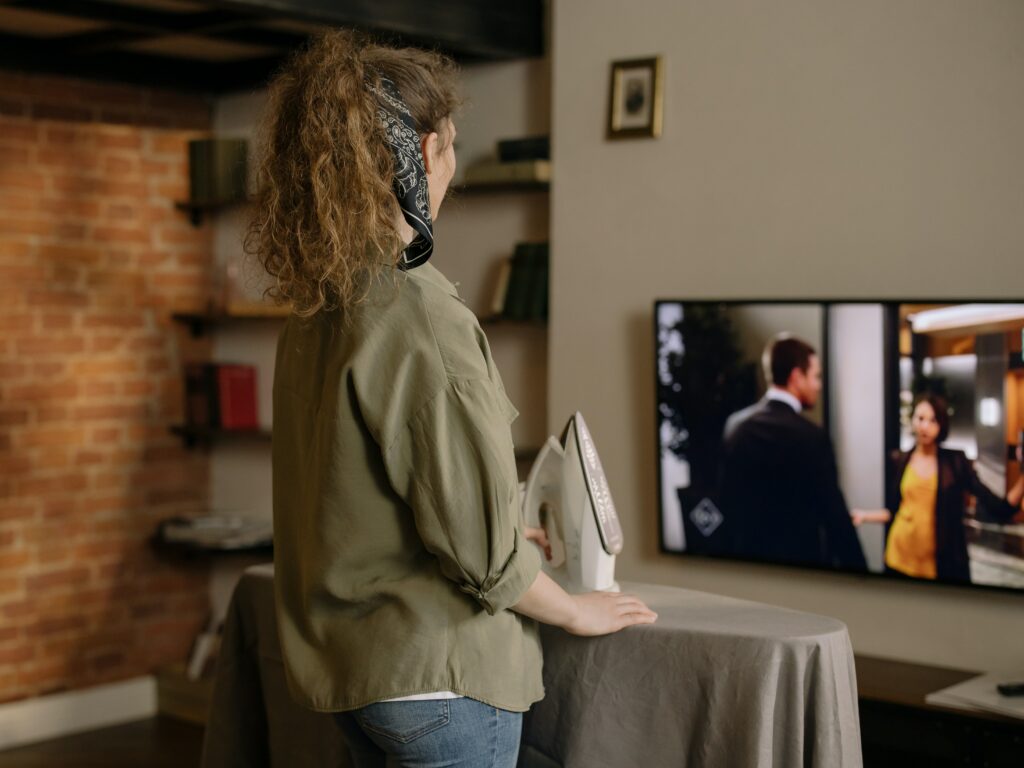In today’s digital landscape, videos have become a cornerstone of communication, education, and entertainment. As we strive for a more inclusive society, the importance of captioning in videos cannot be overstated.
Captioning enhances viewer engagement and bridges the communication gap for the Deaf and hard-of-hearing communities. However, it’s crucial to understand that not all captions are equal.
Two primary types of captioning—closed and open—serve different purposes and offer unique advantages.
This article aims to demystify these terms, diving deep into the distinctions between closed and open captioning and why understanding these differences is vital for content creators and consumers.
The Difference Between Closed and Open Captions
Navigating the world of video captioning can be complex, but understanding the nuances between closed and open captions is crucial for content creators and viewers.
Captioning is converting audio elements of a video into text, displayed on the screen, to make the content accessible to a broader audience, including those who are Deaf or hard-of-hearing.
Closed captions can be toggled on or off by the viewer, offering a customizable experience.
Conversely, open captions are permanently embedded into the video, making them always visible.
When deciding between closed and open captions, consider your target audience, the platforms where the video will be displayed, and any compliance requirements. Each type has its own set of advantages and limitations, so choose based on your specific needs.
Don’t miss out on the Bridg’d app launch. Complete the form to stay in the loop with the latest news from the team.
What Are Open Captions
Open captions are more than just an accessibility feature; they’re a commitment to inclusivity that’s hard-coded into your video content.
Open captions are text descriptions of the audio components in a video, permanently burned into the footage. Unlike closed captions, they cannot be turned off, ensuring that the content is accessible to everyone at all times.
The term “open” signifies that these captions are openly visible to all viewers without requiring activation or special settings. They are a constant presence, making them ideal for environments where viewer control is limited.
How Open Captions Work and When to Use Them
Understanding how open captions are implemented and when to utilize them can significantly impact your video’s accessibility and reach. Let’s delve into the mechanics of adding open captions and the ideal scenarios for their use.
Open captions are usually added during the post-production phase of video creation. They are “burned” into the video file, meaning they become inseparable from the video itself.
Open captions are best suited for platforms that lack native captioning support or in public
spaces where the audio might be muted.
They are also ideal for social media videos that autoplay without sound, ensuring the message is conveyed regardless of the audio settings.
The Advantages of Open Captions
Open captions offer a myriad of benefits that extend beyond mere compliance with accessibility standards.
Let’s unpack the advantages that make open captions compelling for content creators and viewers alike.
- Uncompromised Accessibility: Open captions ensure that everyone can fully engage with the video content regardless of their hearing ability. They eliminate the need for viewers to toggle settings, making the content instantly accessible.
- Enhanced User Engagement: Studies show that videos with captions have higher engagement rates, catering to diverse viewing environments—be it a noisy café or a quiet library.
- SEO Benefits: Search engines can index the text in open captions, improving the video’s visibility in search results and driving more organic traffic to your content.
- Global Reach: Open captions can be a boon for international audiences who may not be proficient in the video’s original language, as they provide a textual context that aids comprehension.
- Autoplay Advantage: For social media platforms where videos autoplay without sound, open captions ensure the message isn’t lost, capturing viewer attention right from the first frame.
When to Use Open Captions
Open captions are not a one-size-fits-all solution but excel in specific contexts. Let’s explore the situations where employing open captions can be particularly advantageous.
- Public Spaces: In bustling environments like airports or gyms, where audio is often drowned out, open captions ensure the message is conveyed.
- Social Media Platforms: For platforms where videos autoplay in silence, open captions grab viewer attention instantly, making your content more engaging.
- Educational Settings: Open captions can aid comprehension and cater to diverse learning styles in classrooms or online courses.
- Global Audiences: Open captions provide a universal mode of understanding when targeting viewers who speak different languages.
Related: Top Mobile Apps for the Deaf and Hard of Hearing in 2023

What Are Closed Captions?
Closed captions are the unsung heroes of video content, offering a textual layer that brings sound to silence. But why are they termed “closed,” and how do they differ from their open counterparts?
The term “closed” signifies that these captions can be toggled on or off, allowing viewers to choose their experience.
Real-world examples of closed captions include:
- Streaming Services: Platforms like Netflix allow you to turn captions on or off.
- Educational Videos: Many e-learning platforms offer closed captions to aid comprehension.
Closed captions are not just an add-on; they’re an essential tool for inclusivity, allowing viewers to engage with content in a way that suits their needs best.
How Closed Captions Work and When to Use Them
Closed captions are more than just words on a screen; they’re a dynamic feature that can be customized and controlled.
Closed captions are usually added post-production through specialized software or platforms that synchronize text with audio.
Optimal times to use closed captions include:
- Accessibility: For viewers with hearing loss and deafness.
- Multilingual Audiences: To provide translations.
- Noise-Sensitive Environments: Such as libraries or late-night binge-watching.
Understanding the mechanics and optimal use cases for closed captions can significantly enhance your video’s reach and inclusivity.
The Advantages of Closed Captions: More Than Meets the Eye
Closed captions are not just a tool for accessibility; they’re a multifaceted feature that enhances viewer engagement and comprehension.
Let’s delve into the benefits of closed captions in modern video content.
Boosts Accessibility
- Inclusivity: Makes content accessible to viewers with hearing loss and deafness.
Enhances Comprehension
- Clarity: Helps in understanding heavy accents or fast speech.
- Context: Provides additional information like background noises.
Increases Engagement
- Watch Time: Viewers are more likely to watch the entire video.
- SEO Benefits: Search engines can index the text, improving video SEO.
Offers Flexibility
- Customization: Viewers can adjust the font, size, and color.
- Language Options: Supports multiple languages for a global audience.
Closed captions are not just an add-on but an essential feature that amplifies your video content’s quality, reach, and impact.
Closed Caption Quality
Quality in closed captions isn’t just about ticking off a compliance box; it’s about enhancing viewer engagement and ensuring inclusivity.
Let’s delve into the key indicators defining closed captions’ quality.
- Accuracy: Captions must accurately represent the spoken words, background noises, and other audio cues to be genuinely effective.
- Timing: The captions should align perfectly with the audio, ensuring a seamless viewing experience.
- Readability: Font size, color contrast, and spacing all contribute to the readability of captions, making them accessible to all viewers.
- Completeness: From start to finish, captions should be comprehensive, leaving no room for gaps or missing information.
High-quality closed captions are essential for creating an inclusive and engaging viewer experience while meeting crucial accessibility standards.
Related: Discover the Latest Communication Devices for Deaf Individuals

The Final Word on Captioning: Bridging Communication Gaps
In the digital age, the power of video content is undeniable. Still, its impact is only as strong as its accessibility.
Open and closed captions each offer unique advantages, catering to different needs and scenarios. Whether you’re a content creator or a viewer, understanding these nuances can significantly enhance your video experience.
And speaking of enhancing experiences, Bridg’d is subtly revolutionizing how we communicate. This innovative app is a testament to what technology can achieve—breaking down barriers and making communication seamless for everyone, including the Deaf and hard-of-hearing communities.
Are you seeking ways to communicate with your Deaf or hard-of-hearing friends and family? Our mobile app will empower inclusive conversations with our voice-to-text or text-to-voice features. Visit Bridg’d today.





